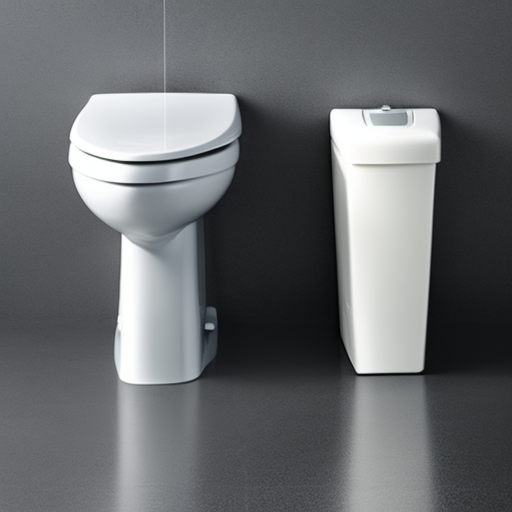The sweet-smelling scents of spring rain and fresh laundry fills the air – until you encounter the foul odor coming from a public bathroom with a low-flow toilet. It’s a dreaded scent, one that quickly sends shivers down the spine. But why is it that a low-flow toilet produces such a putrid odor? In this article, we’ll explore the root of the issue and look into how it can be avoided. low-flow toilets smell?”>
low-flow toilets smell?”>
Advantages of Low-flow Toilets
Making the switch to a low-flow toilet can bring about several benefits that extend far beyond just saving water. Here are some of the :
- Lower water bills: With a low-flow toilet, you will use significantly less water per flush, which can lead to a significant reduction in your water bill.
- Helping the environment: Low-flow toilets use less water per flush, meaning less water is being wasted, and more water is being conserved for the environment.
- No more clogs: Since low-flow toilets use less water per flush, they are less likely to cause clogs, reducing the need for expensive plumbing services.
But how do low-flow toilets really perform when it comes to smells? Some people worry that a low-flow toilet may cause odors due to the lower amount of water used per flush. However, this is not necessarily the case. In fact, many low-flow toilets come equipped with powerful flushing systems that can clear waste just as effectively as their high-flow counterparts. With proper maintenance, a low-flow toilet can be just as odor-free as any other toilet.
In sum, a low-flow toilet is an excellent investment for any homeowner looking to reduce their water usage and save money. By using less water per flush, low-flow toilets can help the environment and prevent clogs, and with the right flushing system, low-flow toilets can be just as effective and odor-free as any other toilet.
Common Odor Problems of Low-flow Toilets
If you’re using a low-flow toilet and experiencing unpleasant odors, you’re not alone. While low-flow toilets can save water and are environmentally-friendly, they can also be the source of some unpleasant smells. Here are some common odor problems associated with low-flow toilets and how to solve them:
Firstly, the U-bend, or the trap, in these toilets is often smaller than in traditional ones. This means that waste doesn’t always move through the pipes as quickly, which can result in lingering odors. To solve this problem, try flushing more regularly throughout the day or consider installing an air admittance valve. These devices allow air to enter the plumbing system, helping to maintain water levels in the U-bend and reduce the likelihood of foul smells escaping into your bathroom.
Another issue that contributes to low-flow toilet smells is that the smaller volume of water used means that waste doesn’t get completely flushed away. This can cause bacteria to build up and produce a rotten egg smell. One solution to this problem is to use an enzymatic cleaning product specifically designed for low-flow toilets. These products contain bacteria-eating enzymes that break down organic matter, reducing the likelihood of bacteria growth and foul odors. Regular cleaning of the toilet with a mild cleaner and a toilet brush can also help keep smells at bay.
Sometimes low-flow toilets do have a tendency to smell more than traditional models, but that doesn’t mean you have to live with the odors. By following the tips above and being mindful of what you put down the drain, you’ll be able to keep your toilet fresh and odor-free. Plus, you’ll be doing your part for the environment by using less water, so it’s a win-win situation!
Preventing Odors from Low-flow Toilets
One of the main concerns people have when switching to low-flow toilets is whether or not they will emit unpleasant odors. The good news is that with proper maintenance, you can prevent odors from low-flow toilets.
To start, make sure you’re using a high-quality toilet bowl cleaner. Look for products that are specifically designed to break down waste and neutralize odors. You should also consider using a toilet bowl deodorizer or hanging air freshener to keep your bathroom smelling fresh. Another helpful tip is to flush twice if necessary to ensure that all waste is fully eliminated from the bowl. Remember, a low-flow toilet is designed to save water, which means it may not completely flush everything away in one go. With a little extra effort, you’ll be able to keep your bathroom smelling clean and fresh without sacrificing water efficiency. Low-flow toilets present an economical way to save on precious water and energy resources, as well as help conserve water for those in drier climates. For those who are concerned about the potential odors that some low-flow toilets may produce, the good news is that most of them remain just as effective in eliminating odor as the older water guzzling models do. With a bit of care and regular maintenance, you can rest assured that no nose-curling smells will come out of your low-flow toilet!